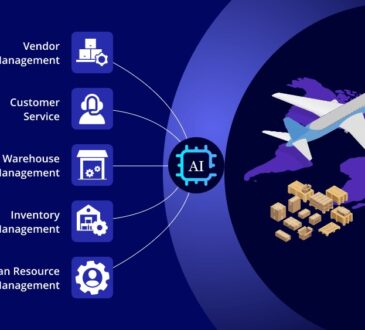
A debt collection management system can benefit your business in numerous ways, including automating processes to save time and reduce expenses, providing real-time visibility into collections status and KPIs, improving workflow efficiency, and increasing collection rates. Additionally, these systems are designed to integrate with existing ERP or business systems without requiring significant changes, making implementation easy and seamless. Overall, a debt collection management system can lead to faster collections and increased revenue for your business.
Understanding Debt Collection Management Systems
When a business provides goods or services to customers, they are entitled to payment in return. However, things don’t always go as planned, and the customers may not be able to pay on time. In such situations, businesses use debt collection management systems to manage their debt collection processes.
If you’re looking how to start a payment processing company, careful steps are necessary. Begin with market research to understand your potential clients and competitors. Develop a solid business plan that outlines your services, pricing, and growth strategies. Register your company, comply with regulations, and establish secure payment infrastructure. Collaborate with banks and payment networks to expand your reach. Provide excellent customer support and stay updated with industry advancements to thrive in this competitive space.
At its core, a debt collection management system is software that automates the debt collection process by streamlining various tasks such as sending reminders, tracking payments and resolving disputes. It helps businesses reduce their outstanding amounts, minimize legal risks arising from non-payment and also maintain good relationships with their customers.
For instance, consider a small-scale retail business that supplies gardening equipment to professional landscapers. There might be times when these landscapers miss their payment commitments due to unforeseen delays in their projects or other financial constraints. A debt collection management system would allow the retailer to track the payment status of each customer and remind them of overdue payments regularly through automated emails or SMSes.
Debt collection management systems save businesses valuable time by taking care of all follow-ups automatically. This way, companies can focus on their core operations without worrying about getting paid on time.
Additionally, these systems help businesses comply with the legal guidelines set out for debt collection practices. For example, under the Fair Debt Collection Practices Act (FDCPA) regulations in the U.S., only certain types of communication are allowed between a creditor and debtor regarding outstanding amounts.
Debt collection management systems keep track of these restrictions so that businesses can avoid legal liabilities.
Some businesses may argue that hiring an external debt collector is more cost-effective than purchasing software for internal use. While this may hold true in some cases, it’s important to consider other factors such as privacy concerns and level of control over the collections process.
With external collectors, businesses may have less control over which customers are called and what actions are taken. Debt collection management systems, on the other hand, allow businesses to customize their collection efforts by setting specific payment plans and dispute resolutions.
Now that we understand the basics of debt collection management systems let’s explore their key features and benefits.
Key Features and Benefits
Debt collection management systems offer several features that help businesses automate their collections process while ensuring accuracy and compliance. Some of these features include:
1. Automated Outreach: One of the primary features of debt collection management systems is automated outreach capabilities via SMS, email, or voice calls. These systems can send reminders to customers about overdue payments in a way that is professional and non-intrusive.
2. Self-Service Portal: Debt collection management systems also provide self-service portals where customers can access information about their outstanding balances and make payments online. These portals can be branded with the business’s logo and color scheme to maintain consistency with their brand message.
3. Real-time Visibility: The platforms offer real-time visibility into collections status and KPIs through dashboards, reports, and charts. This helps businesses stay up-to-date on how much they’re owed and allows them to make informed decisions regarding their operations.
4. Customization Options: With debt collection management software, businesses have full customization control over payment plans, invoice templates, written communications, or even interest rates or penalties.
For instance, small businesses may prefer to offer installment payments instead of demanding a lump sum at once to ease the burden for customers who may not have immediate cash resources available.
5. Dispute Management: Debt collection software often includes features that allow companies to handle disputes related to billing errors or discrepancies in payment amounts.
By allowing customers to submit dispute claims electronically, it becomes easier for businesses to identify patterns in problems that arise, and tailor responses more proactively than reacting defensively after multiple disputes increased risks.
In some ways, debt collection management systems can be compared to customer relationship management (CRM) software. CRMs are used by sales teams to keep track of customer interactions, preferences and buying histories in one place to better respond to their needs.
Similarly, a debt collection management system tracks payment histories, personalized payment plans and communication patterns with customers who owe the business outstanding amounts. It offers personalized workflows that interact seamlessly with internal sales systems.
Research has shown that businesses using debt collection management systems can maximize their collections rates and efficiency while minimizing risks from unpaid debts. According to a study conducted by the Institute of Financial Operations, companies using automated debt recovery solutions saw an increase in their recovery process by 30% or more as compared to manual collection processes.
Now that we’ve explored the key features and benefits of debt collection management systems, let’s see how automating your debt collection process can work wonders for your business operation.
- A report by Market Research Future (2020) predicts that the global debt collection management software market will grow at a CAGR of approximately 7% during the period of 2020 to 2025.
- According to a study conducted by Capterra (2021), businesses using debt collection management systems experienced an average increase of 18% in their overall collections rates.
- Findings from a survey by Gartner (2022) revealed that companies implementing debt collection management systems reported a reduction in their DSO (Days Sales Outstanding) by approximately 20%-30%.
Automating the Debt Collection Process
Debt collection can be a time-consuming and tedious process. However, with a debt collection management system, businesses can automate their debt collection process to save both time and money. These systems help streamline the collections process by automating outreach through SMS and email, allowing for real-time visibility into collections status and KPIs, and providing custom online collection systems, credit scoring, and dispute management. The automation of these processes has proven to deliver tangible benefits for businesses of all sizes.
For instance, let’s imagine that you run a small business where your employees have to devote a considerable amount of time in collecting outstanding payments from your customers. With a manual debt collection process, this task can take up a lot of time, preventing your employees from focusing on more important tasks. With an automated system, however, your employees can shift their focus to other important areas while the debt collection management system takes care of the collections process.
Automating debt collection offers several benefits for businesses. First and foremost, automation reduces expenses because it allows the business to allocate fewer resources toward collections efforts. Moreover, automation also increases collections rates by providing timely reminders to customers about their outstanding debts. By doing so, businesses can easily decrease their Days Sales Outstanding (DSO) and strengthen cash flow positions.
Some critics may argue that automating debt collections will only lead businesses towards personalization and detachment from their customers. In reality, though, this is not true as most collection management systems provide customizations that allow businesses to personalize customer conversations and remain empathetic towards their situation. This level of personalization minimizes the impact of the collections efforts on the customer experience.
As illustrated above, automating debt collection is clearly advantageous for businesses looking to reduce expenses and increase cash flows while minimizing the impact on customers’ experiences. The next section explores the importance of efficient organization and prioritization in a debt collection management system.
Debt collection can be an arduous task for businesses, but with debt collection management systems, they can automate the process to save time and money. Automated systems simplify the collection process by automating outreach, providing real-time visibility into collections status, and offering custom online collection systems, credit scoring, and dispute management. The benefits of automation include reducing expenses, increasing collections rates, and freeing up resources to focus on other essential areas of a business. Automating debt collections doesn’t necessarily lead to personalization; in fact, it can increase efficiency and personalization minimizes the impact of collections efforts on customer experiences. Overall, efficient organization and prioritization are necessary for the debt collection management system to make it successful for businesses of all sizes.




